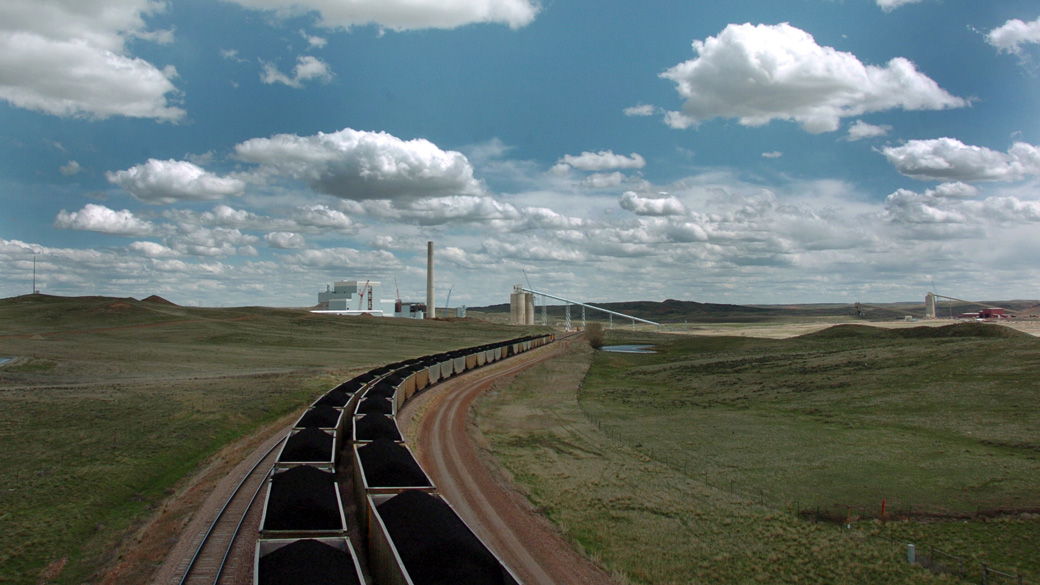
In this Thursday, April 29, 2010 photo, a pair of coal trains idle on the tracks near Dry Fork Station, a coal-fired power plant. (AP Photo/Matthew Brown)
Two massive coal-fired power plants in the southeast came in first and second place for generating the most greenhouse gases in America, clearing the competition by more than five million metric tons of emissions per year. The Scherer Steam Generating Plant, 20 miles northeast of Macon, Georgia, was responsible for 22.3 million tons of emissions in 2013, and the James H. Miller, Jr. power plant, 20 miles northeast of Birmingham, Alabama, generated 21.9 million tons. Coming in as a distant third was the Navajo Generating Station, in northern Arizona, with roughly 16 million tons of emissions. Overall, power plants are responsible for about one third of all of the country’s emissions.
At the state level, the top greenhouse gas producer was Texas, with more than double the output of Indiana, the second-largest producer. Texas also produces and consumes more energy than any state in the union. The energy Texas creates comes largely, but not entirely, from its oil and natural gas reserves. And the state’s biggest consumers of energy are the refining and chemical industries, which, in many cases, support the state’s fossil fuel extraction efforts and have some of the most energy-intensive operations in the US.
But if you look at greenhouse gas emissions per capita, Wyoming and a handful of other relatively unpopulated states far surpass Texas. Wyoming, like runners-up North Dakota and West Virginia, generates a huge amount of energy, mostly from fossil fuels. But these states send much of the energy they produce to other states. Wyoming sends 326 trillion BTUs elsewhere, North Dakota exports 231 trillion BTUs, and West Virginia sends 412 trillion BTUs to other states.
Producing all that dirty energy takes a toll on residents. “When coal is burning at Wyoming power plants, nearby states get electricity and we get the pollution,” Shannon Anderson, a representative of the Powder River Basin Resource Council, a Wyoming citizens’ organization suing to improve air quality in the state, said in March.

A hand covered with wet coal ash from the Dan River, seen swirling in the background, Feb. 5, 2014. (AP Photo/Gerry Broome)
But the risks to the residents of high emission states aren’t limited to air quality concerns. The Freedom Industries spill in West Virginia last January and the coal ash spill in North Carolina last February are just the latest incidents which show that the health risks of living near coal-fired power plants aren’t always tied to what comes out of smokestacks. The Freedom Industries spill of a chemical used to process coal — the health effects of which are still unclear — contaminated 300,000 West Virginian’s drinking water. And the North Carolina spill, which Duke Energy has only cleaned up 10 percent of so far, poured 39,000 tons of coal ash containing toxins such as arsenic, chromium, mercury and lead into the Dan River, coating the river bottom for 70 miles.


